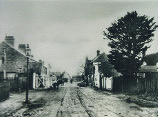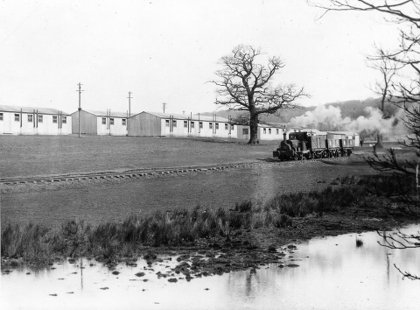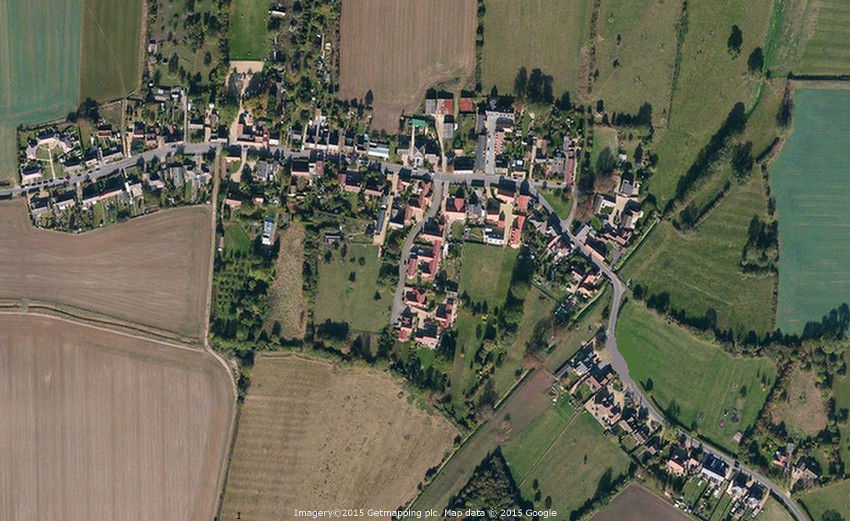
Brief History of Dyke
 The Domesday Book records that in 1086 Orger the Briton owned land around Dyke which he divided into arable, pasture and woodland. It follows that at that time the village community was mainly peasant farm workers…
The Domesday Book records that in 1086 Orger the Briton owned land around Dyke which he divided into arable, pasture and woodland. It follows that at that time the village community was mainly peasant farm workers…
.
The Domesday Book records that in 1086 Orger the Briton owned land around Dyke which he divided into arable, pasture and woodland. It follows that at that time the village community was mainly peasant farm workers….
In the middle ages strip farming was carried out with a three year rotation of crops. As the surrounding land was naturally marsh considerable attention was paid to drainage with land to the east being reclaimed. Over the years land owners became more prosperous resulting in larger houses being built as homes with stackyards, stables and cowsheds erected nearby. There were houses with thatched rooves but only one remains today, Redmile Farm. Jane Redmile was responsible for opening a Sunday School in her Dyke home in the early 1800’s which resulted in a purpose built school being erected in 1843. In 1872 a railway line was constructed between Bourne and Sleaford which ran through Dyke and resulted in the school being demolished to make way for a crossing. A Baptist Chapel was built in 1879 with a school room added to the rear in 1895. The school continued educating the younger children of the village until its compulsory closure by the ruling Conservative government in 1980. During the 19th century there were a number of trades in the village. There were two general grocers selling a wide range of day-to-day items including underwear. A smock mill was transferred and re-built in Dyke in 1845 and still exists today although not in a working condition. A bakehouse built adjacent to the mill in 1845 was run by the Summerfield family who delivered bread around the village by pony and cart. Being an agricultural area horses were important and Bill Robinson ran a blacksmith’s forge replacing horse shoes and repairing agricultural tools and equipment. It is believed that there were once four public houses in Dyke. Today only the old “Crown”, now the Wishing Well Inn, remains. Other tradesmen that had shops in the village included a cobbler, a butcher and a carpenter-cum-undertaker with non remaining to this day. One of the first buses in the area was owned by Bill Walpole who lived in the Engine House adjacent to the Wishing Well Inn. Joseph Walpole, brother to Bill, ran an agricultural contracting business using traction engines to power threshing machines contracted out to local farms. Above the main door to Engine House is a date stone which depicts the outline of a traction engine as used by Joseph and William, his father before him. A village hall located centrally in the village started life as an army hut at Belton Park near Grantham during the First World War. As in many country villages the character has changed over time. Farm labour has been greatly reduced with the increase in powerful tractors and associated machines. Along with the demise of the farm labourer has been the demise of “characters”. Stories are retold of Walter Willy Mills who kept one of the shops and was a great talker and gatherer of “local gossip”. Shep Kendal who would retire early to bed and amuse himself by singing old folk songs to the delight of passers by. Nurse Rouse in her long black skirts who picked onions in her spare time and Old Ben Laxton who swept the roads and recountered stories about “the good old days”.
The above photograph is an ariel view of Dyke.
More About:
Dyke WI
The Windmill in Dyke
Dyke Baptist Chapel
Dyke Village Green
Dyke Village Hall
Dyke Engine House
The Railway in Dyke
The Wishing Well Inn
The Car Dyke
Dyke Village Life
Contact Dyke Village Hall
Main Road, Dyke, Bourne, PE10 0AF
Email: contact@dykevillagehall.org.uk










